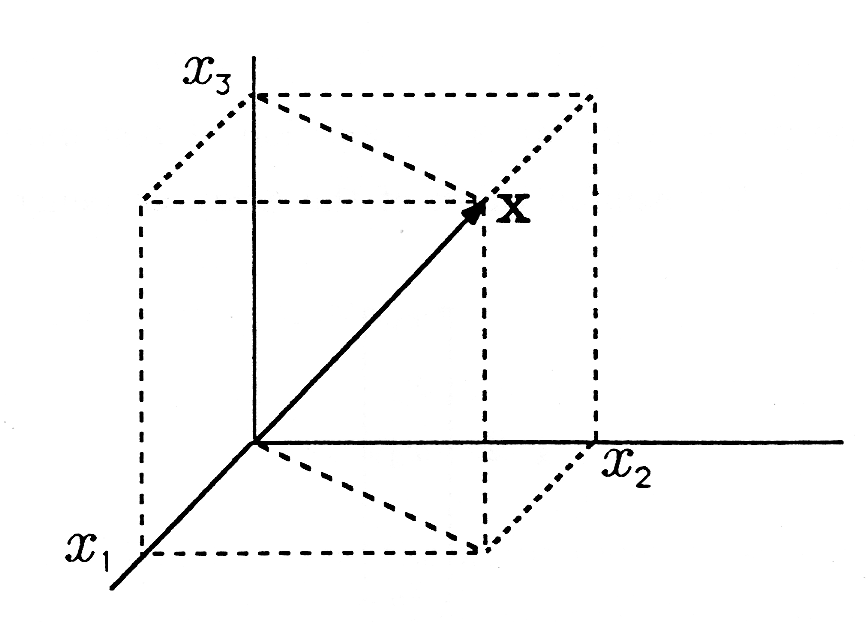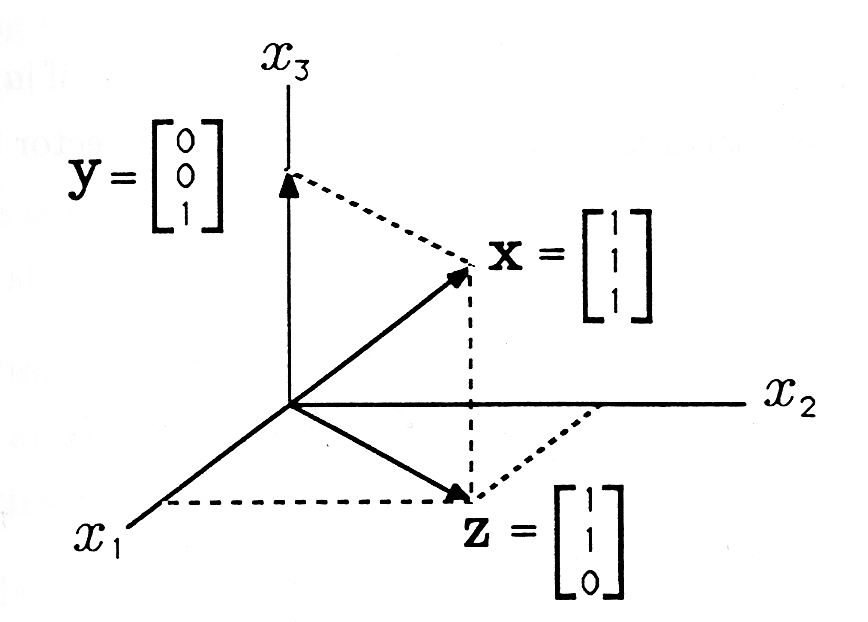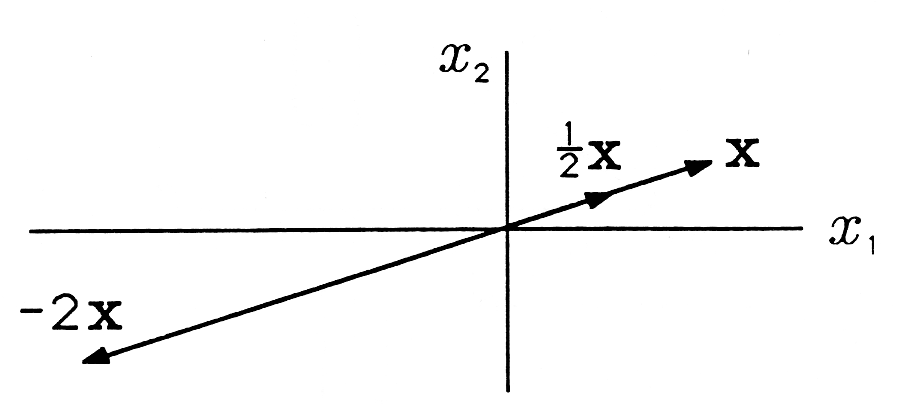| << Chapter < Page | Chapter >> Page > |
For our purposes, a
vector is a collection of
real numbers in a one-
dimensional array.We usually think of the array as being arranged in a
column and write
.
Notice that we indicate a vector with boldface and the constituent elements with subscripts. A real number by itself is called a scalar , in distinction from a vector or a matrix. We say that is an n-vector, meaning that has elements. To indicate that is a real number, we write
meaning that is contained in , the set of real numbers. To indicate that is a vector of real numbers, we write
meaning that is contained in , the set of real n-tuples. Geometrically, is n-dimensional space, and the notation means that is a point in that space, specified by the coordinates . [link] shows a vector in , drawn as an arrow from the origin to the point . Our geometric intuition begins to fail above three dimensions, but the linearalgebra is completely general.

We sometimes find it useful to sketch vectors with more than three dimensions in the same way as the three-dimensional vector of [link] . We then consider each axis to represent more than one dimension, a hyperplane, inour n-dimensional space. We cannot show all the details of what is happening in n-space on a three-dimensional figure, but we can often show importantfeatures and gain geometrical insight.
Vector Addition. Vectors with the same number of elements can be added and subtracted in a very natural way:
The difference between the vector and the vector is the vector . These vectors are illustrated in [link] . You can see that this result is consistent with the definition of vector subtraction in [link] . You can also picture the subtraction in [link] by mentally reversing the direction of vector to get and then adding it to by sliding it to the position where its tail coincides with the head of vector . (The head is the end with the arrow.) When you slide a vector to a new position for adding to another vector, you must not changeits length or direction.

Scalar Product. Several different kinds of vector multiplication are
defined.We begin with the
scalar product . Scalar multiplication is defined
for scalar
and vector
as
If , then the vector is "shorter" than the vector x ; if , then the vector is ‚"longer" than x . This is illustrated for a 2-vector in [link] .


Notification Switch
Would you like to follow the 'A first course in electrical and computer engineering' conversation and receive update notifications?